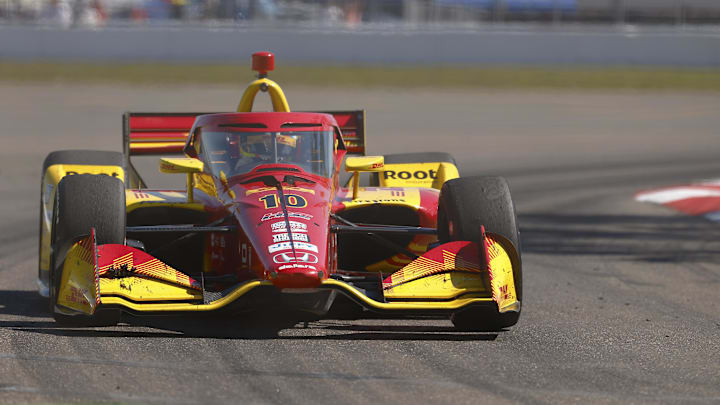The NTT IndyCar Series is set to run on a new street circuit in Arlington, Texas starting next year, and that race has been confirmed for Sunday, March 15, 2026. Now it has been confirmed that the season is once again set to begin on the streets of St. Petersburg, Florida, and the date for that race is particularly notable.
The 2026 season is scheduled to get underway on Sunday, March 1. Though it's scheduled to take place the same weekend next year as it did this year, it also means that there is only a two-week break between the first two races on the calendar in 2026.
It's a breath of fresh air for the many fans who have long seen the issue with the series having a massive break between the season's first two races, an issue that has plagued the series for quite a few years now.
Not since the 2021 season have there been fewer than three weeks between the first two races of a season.
Back in 2021, the season's first two races were separated by only one week, something that hadn't happened since 2012.
In 2016, there were three weeks between races. In 2017 and 2018, there were four weeks between races, though we'll give the series a break for the four-week break in 2020 since a lot had to be shifted around on the calendar just so there could actually be a season amid pandemic-related restrictions.
In 2022, there were three weeks between races, and in 2023, there were four. In 2024, there were once again three, but the second race was a non-points race; there were six weeks between actual points-paying, championship events.
The 2025 season saw a three-week break between race one and two, a three-week break between race two and three, and including this weekend's race at Barber Motorsports Park, a three-week break between race three and four.
As far as the 2026 season goes, you have to go all the way back to 2014 to find the most recent season in which the first two races were separated by exactly two weeks. It was technically true in 2015 as well, though that is only because the race that was supposed to start the season in Brazil didn't happen.
At the end of the day, it is important for IndyCar to capitalize on early-season momentum.
That is especially important with all IndyCar races now on Fox, making the American open-wheel racing series the only premier motorsport series in North America with all races being shown on network television.
For example, this year's opener in St. Petersburg was the most viewed non-Indy 500 IndyCar race since 2011, yet viewership plummeted ahead of race number two at Thermal Club, which took place three weeks later. Three weeks after that, viewership dropped even further for the street race in Long Beach, California.
Now it remains to be seen how long the break will be between the Arlington race and whatever ends up being the third race on the schedule in 2026.
Regardless, there probably will be at least one three-week break early in the season, since the Indy 500, annually scheduled for the last Sunday in May, is generally the fifth or sixth race on the calendar.
This weekend's race at Barber, the Children's of Alabama Indy Grand Prix, is set to be shown live on Fox beginning at 1:30 p.m. ET on Sunday, May 4. Start a free trial of FuboTV today and don't miss any of the upcoming NTT IndyCar Series action! All 17 races on the 2025 schedule are set to be shown live on Fox for the first time in series history.
